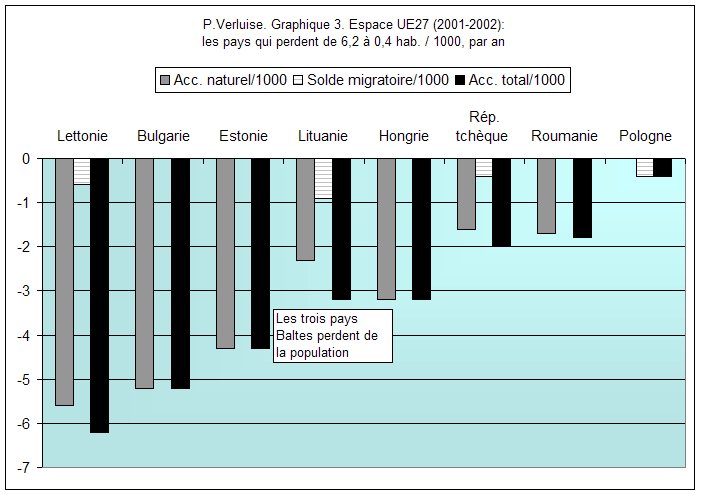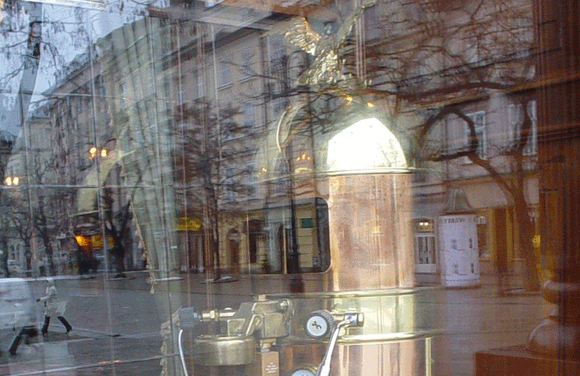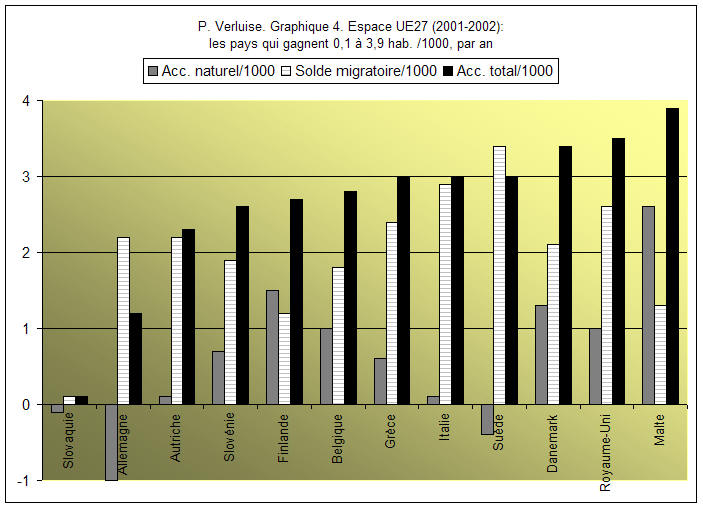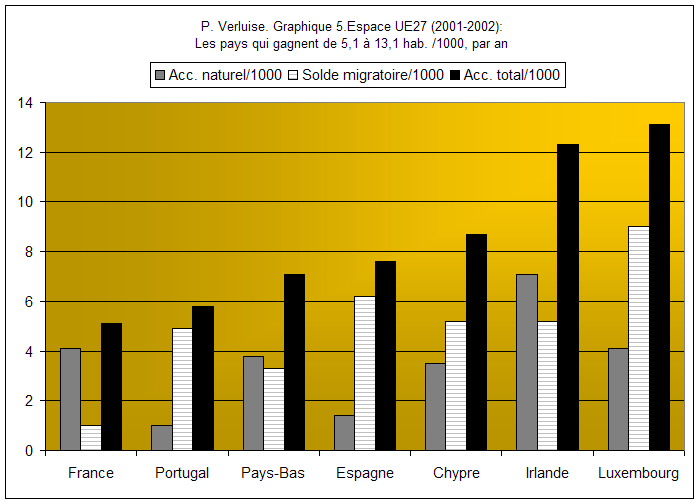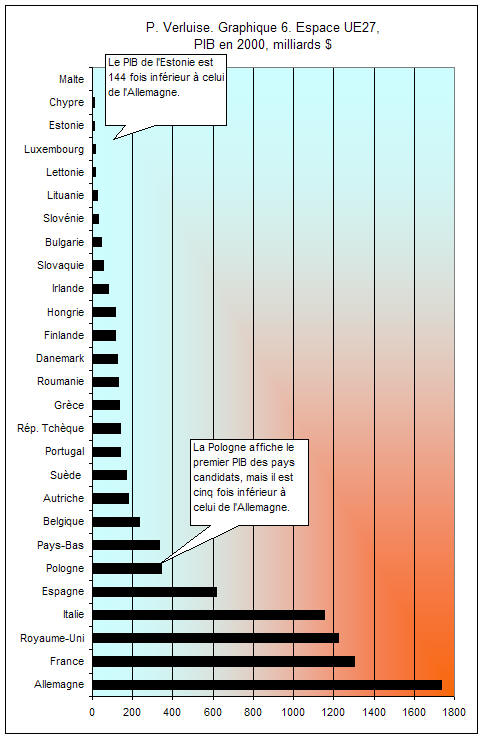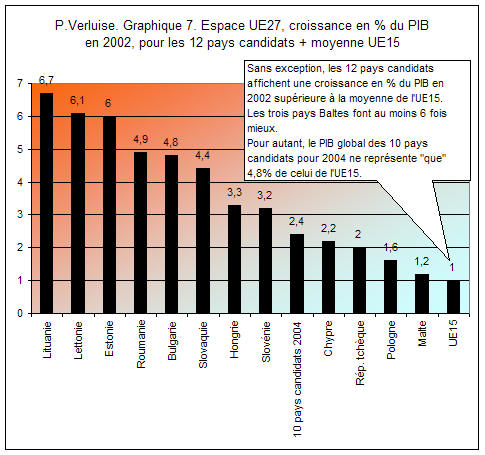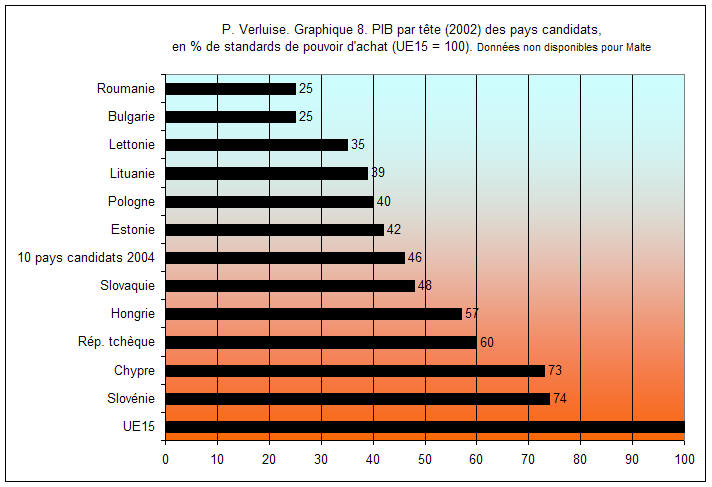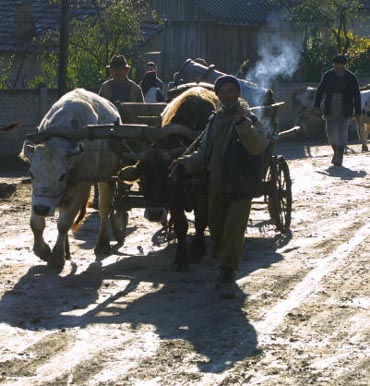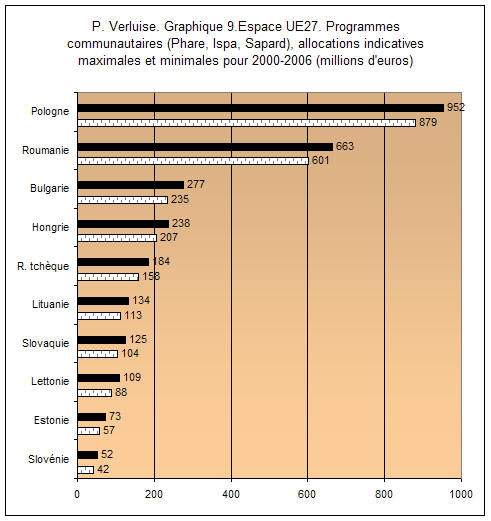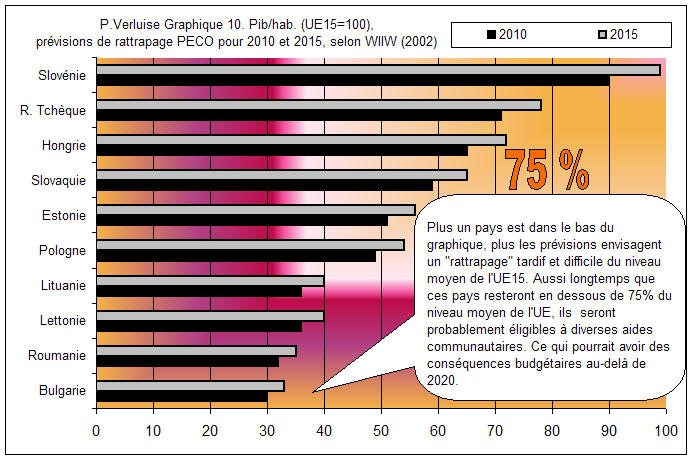Traduit par Elisabeth Delhaisse
Key words: pierre verluise, geopolitics of the european union, enlargements 2004 and 2007, EU 15, EU 25, EU 27, cyprus, estonia, hungary, latvia, lituania, malta, poland, czech republic, slovakia, slovenia, bulgaria, rumania, territory surface, population, inhabitants, demography, natural increase, total increase, migrations, migrants, emigration, immigration, demographic dynamics, depopulation, ageing, taking up, economic activity, mafias, corruption, migrating policy of the UE EU, judicial co-operation between the UE countries, economic, gross domestic product 2002, 2003, GDP per capita, 2000 – 2006 UE programs, 2010 and 2015 adjustment forecasts, inheritance of the planned economy, transition, precariousness, inequalities, euro zone, buying power standards, UE budget, allowances, phare, ispa, sapard, UE negotiation ways, European Commission, UE financial prospects, cohesion policy.
How will the EU enlargement change the geopolitical fundamentals of the community area? Because "the richness lays in the men", this study deals with demographic dynamics and the production of wealth, via economic growth.
This means being aware of the evolutions induced by the EU enlargement to ten new countries on 1st May 2004 (Cyprus, Estonia, Hungary, Latvia, Lithuania, Malta, Poland, Czech Republic, Slovakia, Slovenia), and the membership of two other countries (Bulgaria, Rumania) by 2007.
The membership of Bulgaria and Rumania for 2007 is to be considered with some precaution. Furthermore, the economic and demographic data used here are evidently anterior to May 1, 2004, one must be cautious in their use. These figures should be recalculated with the definitive data on January 1, 2005 and on the first day of the year following the Bulgarian and Rumanian entry. Finally, it will be important at one point to take into account the possible candidature of the Occidental Balkans, the process having started at the Thessalonic summit (June 2003). Croatia, Bosnia, Serbia-Montenegro, Macedonia and Albania must first westernise their political ways and liberalise their economy. Not to mention the Turkish candidature that is supported … by the United-States.
The EU at 25, and then at 27, cannot be the same as the EU15. The demographic parameter is our first indicator here. As indicated in the graph 1, based on the population in millions on 1st January 2002, it is undeniable that the EU enlargement to ten and then to twelve new countries will increase the number of inhabitants in the community area.
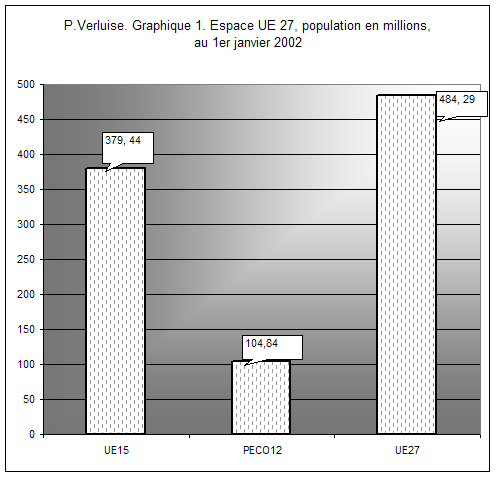
The passage from EU15 (379,4 million inhabitants) to EU27 (484,2 million inhabitants) represents, according to these figures, a gain of 104,8 million inhabitants. That is an increase of 27,6%. Compared to EU15, the community population would be multiplied by 1,28% with the enlargement to 27. The twelve new members would then represent 21,6% of the population of the enlarged European Union, that is a little more than one person out of five. The enlargement would move the EU gravity centre towards “Median Europe” because most of the candidates are situated in that direction. As Germany has a solid knowledge of the Mitteleuropa, it could be advantaged. Finally, enlarged to 27, the EU would count 1,7 times more consumers than the United States but their average purchasing power would not be the same.
A LARGER BUT MORE HETEROGENEOUS AREA AN INCREASE IN THE NUMBER OF LESS POPULATED COUNTRIES
The integration of these twelve countries would also induce a gain in the EU territory surface. It would grow from 3,2 million square kilometres (EU15) to 4,5 million square kilometres (EU27), that is a growth of 40,6%. The twelve new members would then represent 28,8% of the surface of the enlarged EU.
The EU territory, which is now limited to 33,3% of the surface of the United States, would then represent 46,8% of its surface. The community territory would remain inferior to the half of the United States. Also, the territory planning of the oriental part of the EU27 can barely weigh in the balance. The improvement in infrastructures is a huge financial challenge that could allow EU27 to benefit truly from the gains in population and territory.
The study of this data, on the EU15 scale or on the EU27 scale, should not stop us from making an analysis specific to each country. To start with, the sizes of their populations vary. If it is unwise to speak of “big” and “small” countries, we are nevertheless forced to observe that the 27 countries are not equally populated, as it appears in the graph 2 “EU27 area, population in thousands on 1st January 2002.”
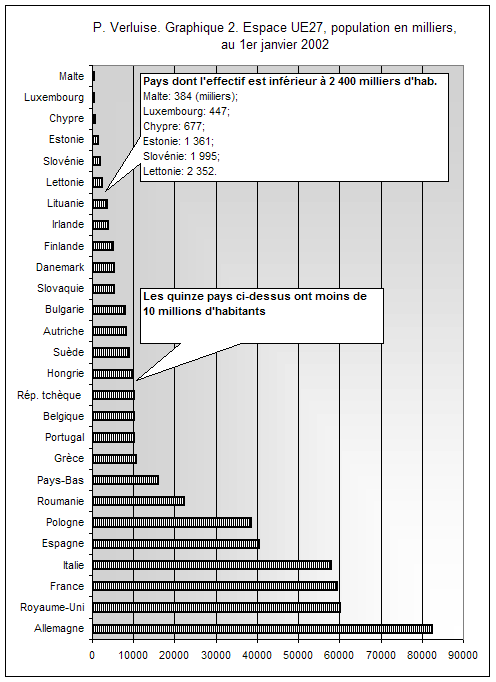
This graph shows that on 1st January 2002 not one candidate to the European Union has a population over 40 million inhabitants. For information, Germany, reunited since 1989-1990, is the most populated country in the community area with its 82,3 million inhabitants at the considered date. We can then say that not one candidate country has a population half as big as the population of the Federal Republic of Germany.
Poland is the most populated country among the candidates for the 1st May 2004 entry: 38,6 million inhabitants. It alone represents 52% of the population of the ten candidates for 2004. Rumania is the most populated country for 2007: 22,3 million inhabitants. The other countries of the first group of candidates all have less than 10,3 million inhabitants. Four of them count between 10,2 and 3 million inhabitants, we have by decreasing order: Czech Republic, Hungary, Slovakia, Lithuania. Finally, the rest of them count less than 2,4 million inhabitants, we have by decreasing order: Latvia, Slovenia, Estonia, Cyprus and Malta.
Therefore, the passage from EU15 to EU27 would mean that the number of countries poorly populated would increase. When EU15 has six countries with less than 10 million inhabitants, EU27 will have fifteen, that is a multiplication of 2,5. It is predictable that the countries that have recently gained their independence will be as eager as the other countries to speak their voices, after having obtained the most advantageous institutional compromise possible. This of course will make it extremely difficult for the EU to speak one voice on the international scene, especially in matters of foreign affairs and defence.
WHAT DEMOGRAPHIC DYNAMICS ?
After having studied the basic data, one must look closer to the demographic dynamics of the members and candidates considering correlatively the natural increase, the migratory balance and the total increase. As it appears in the graphs 3, 4 and 5, the hierarchical classification of this data, regarding this last parameter, shows three groups.
The graph 3 presents all the countries that – from 1st January 2001 to 1st January 2002 – have lost between 6,2 and 0,4 inhabitant(s) for 1000 inhabitants. These countries are all, without any exception, candidates for 2004 or 2007.
